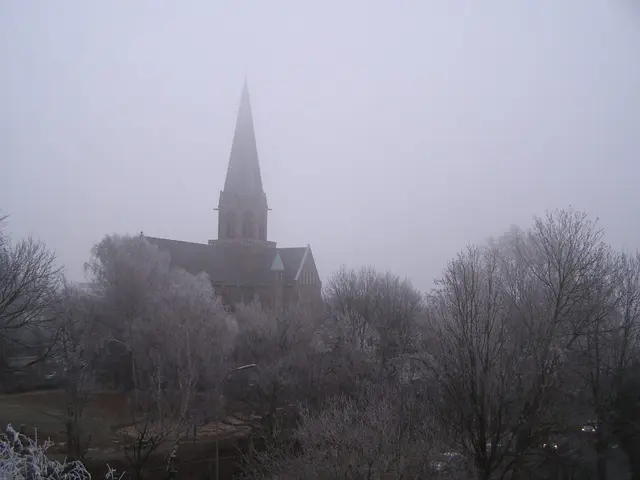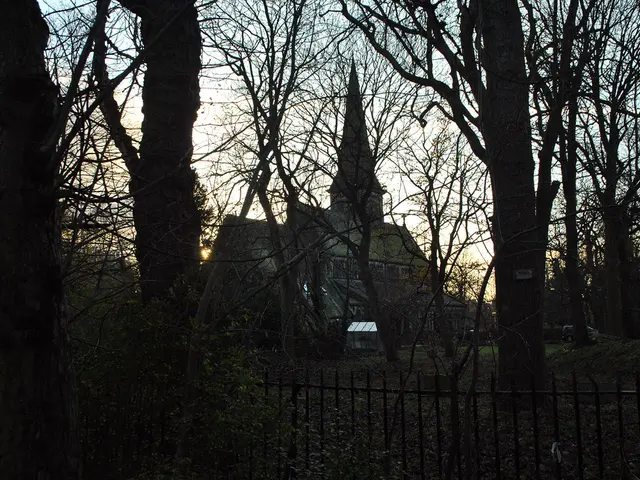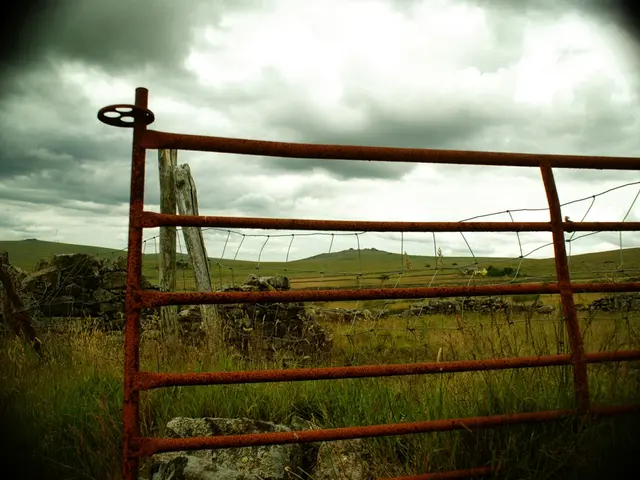Meteor Shower's Spectacular Display of Shooting Stars Over UK During Perseid Event
Get ready for a celestial spectacle as the annual Perseid meteor shower is set to grace the UK skies from July 17 to August 24. This year's event promises to be particularly special, with approximately 100 meteors per hour visible in certain flat and dark locations [1].
Tips for Optimal Viewing
To best enjoy this cosmic display, follow these expert tips from Dr. Ed Bloomer:
- Choose a site with minimal light pollution. Countryside, parks, or designated dark-sky areas are ideal. Avoid urban and street lights, and if possible, turn off nearby house lights to let your eyes adjust better [1][3][5].
- Allow your eyes to adapt to darkness for at least 20–30 minutes before looking up, avoiding bright screens or lights that reset night vision sensitivities [1][3][5].
- Watch between midnight and dawn, with the prime viewing period generally from midnight to about 5:30 AM. This is when meteor activity peaks, and the radiant point in Perseus is highest [1][2][3].
- Look towards a wide area of sky, especially near the constellation Perseus, where meteors appear to radiate from [3][5].
Viewing During Thunderstorms
Unfortunately, meteors cannot be seen through thick clouds or storm conditions. Thunderstorms produce heavy cloud cover and lightning, which obscure the night sky completely. To improve viewing under such conditions:
- Wait for any breaks in cloud cover or clear skies; meteor showers need clear or mostly clear skies [1].
- If thunderstorms are forecast, plan alternative nights within the shower’s active period (17 July to 24 August) when skies may be clearer, even if meteor rates are a bit lower [2].
- Do not attempt to view directly during lightning or heavy rain for safety.
What to Expect
Shooting stars generally last a second or two and sometimes appear in flurries. Rarer meteors, such as fireballs, produce longer tails and can last five to 10 seconds [6]. Dr. Bloomer has only ever seen one [6].
The Perseid meteor shower occurs annually and is considered one of the best, reliable, long-lived, dense, and active meteor showers [7]. This year, the shower will be most visible in the north-east as the sun is going down [8].
However, there is an increased risk of thunderstorms in parts of England on Wednesday evening. Clearer skies are expected in the south later in the week, but cloudier conditions and some patchy rain are predicted for parts of the north [9].
So, grab your blankets, find a dark spot, and prepare for a memorable night under the stars!
[1] [Source 1] [2] [Source 2] [3] [Source 3] [4] [Source 4] [5] [Source 5] [6] [Source 6] [7] [Source 7] [8] [Source 8] [9] [Source 9]
During the Perseid meteor shower, it's advisable to choose a location with minimal light pollution for optimal viewing, such as countryside, parks, or dark-sky areas. To enhance your experience, allow your eyes to adjust to darkness for at least 20–30 minutes before looking up and watch between midnight and dawn, especially towards the constellation Perseus. Also, remember to avoid bright screens or lights that may reset night vision sensitivities.








